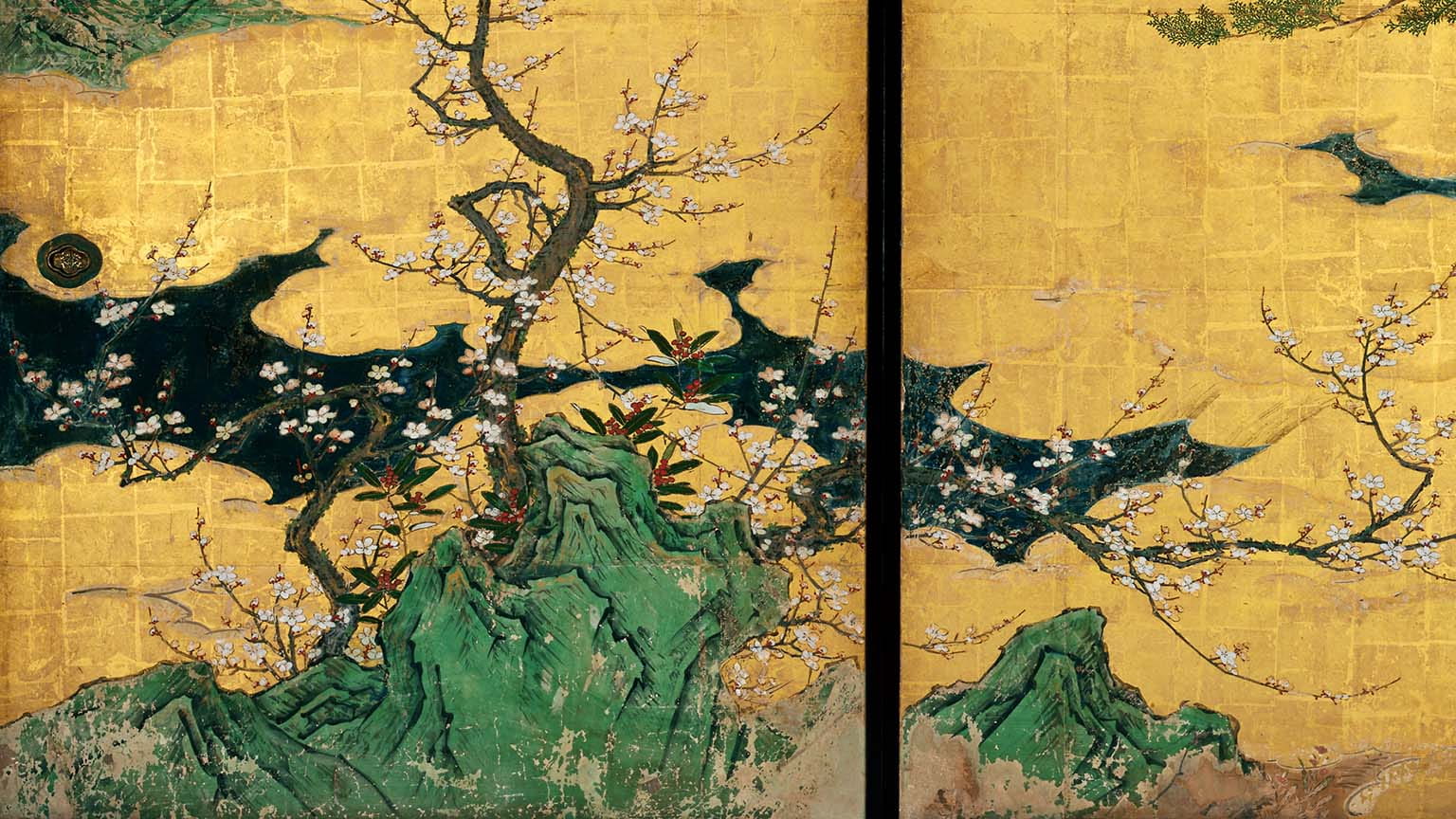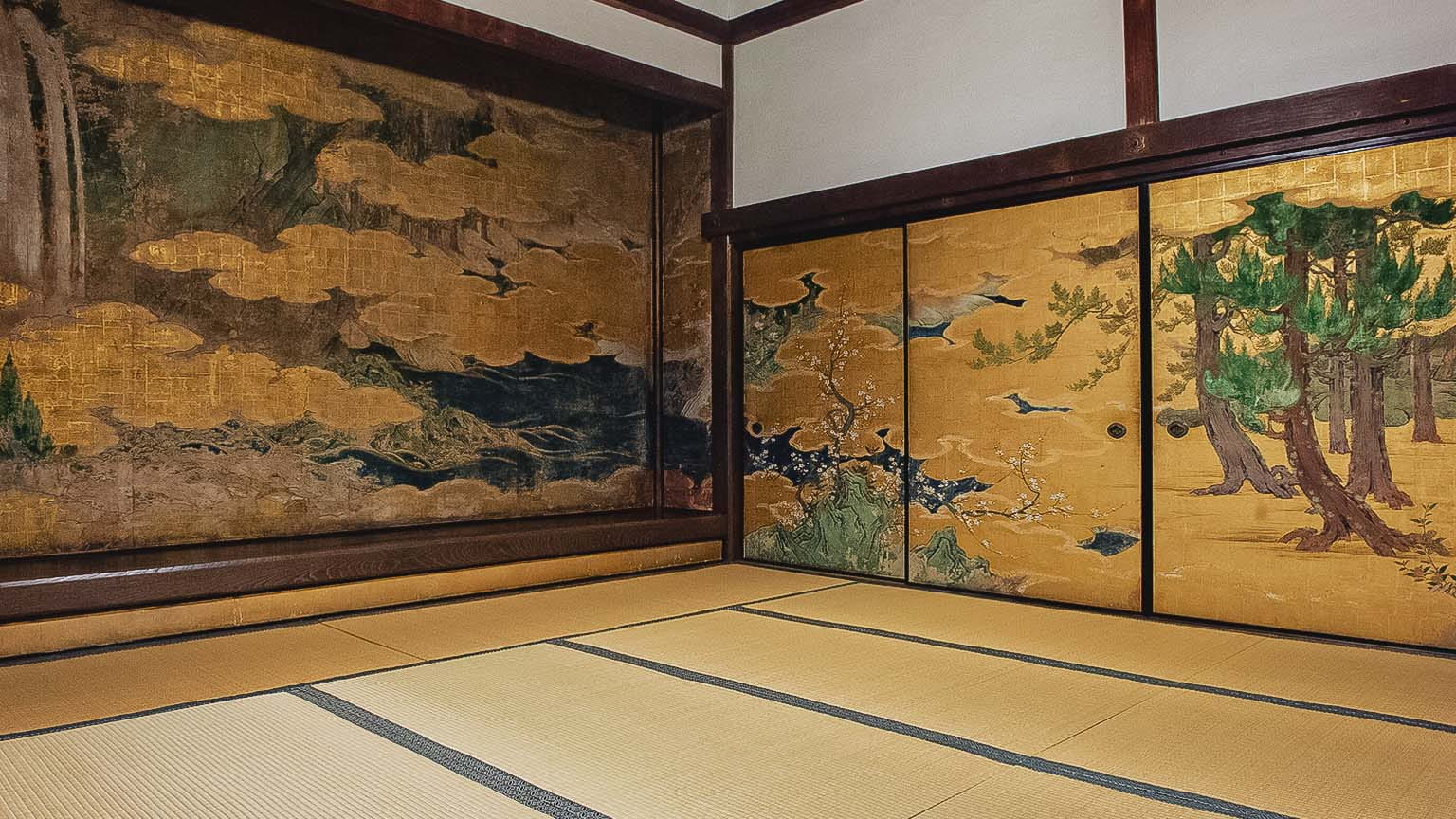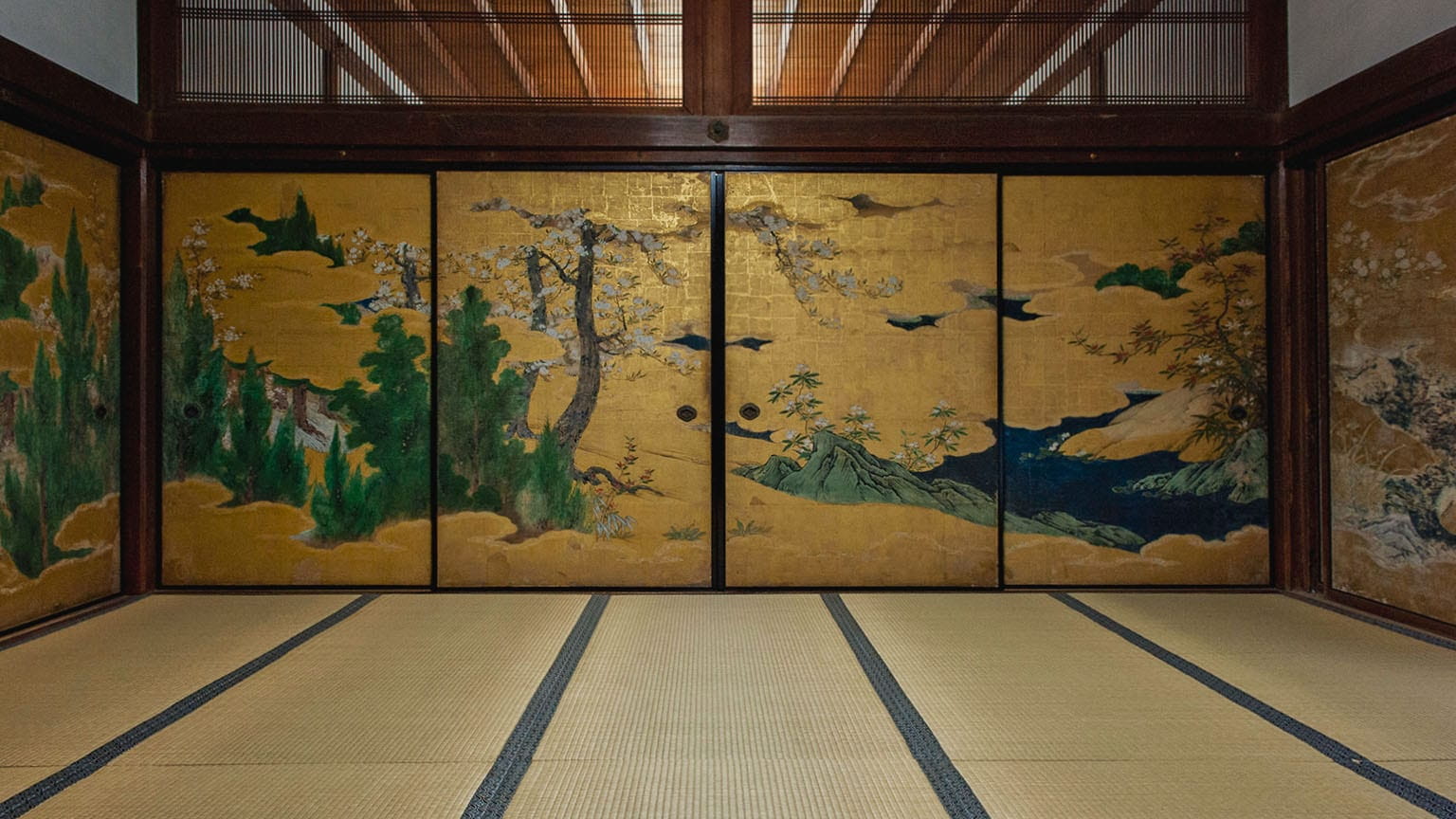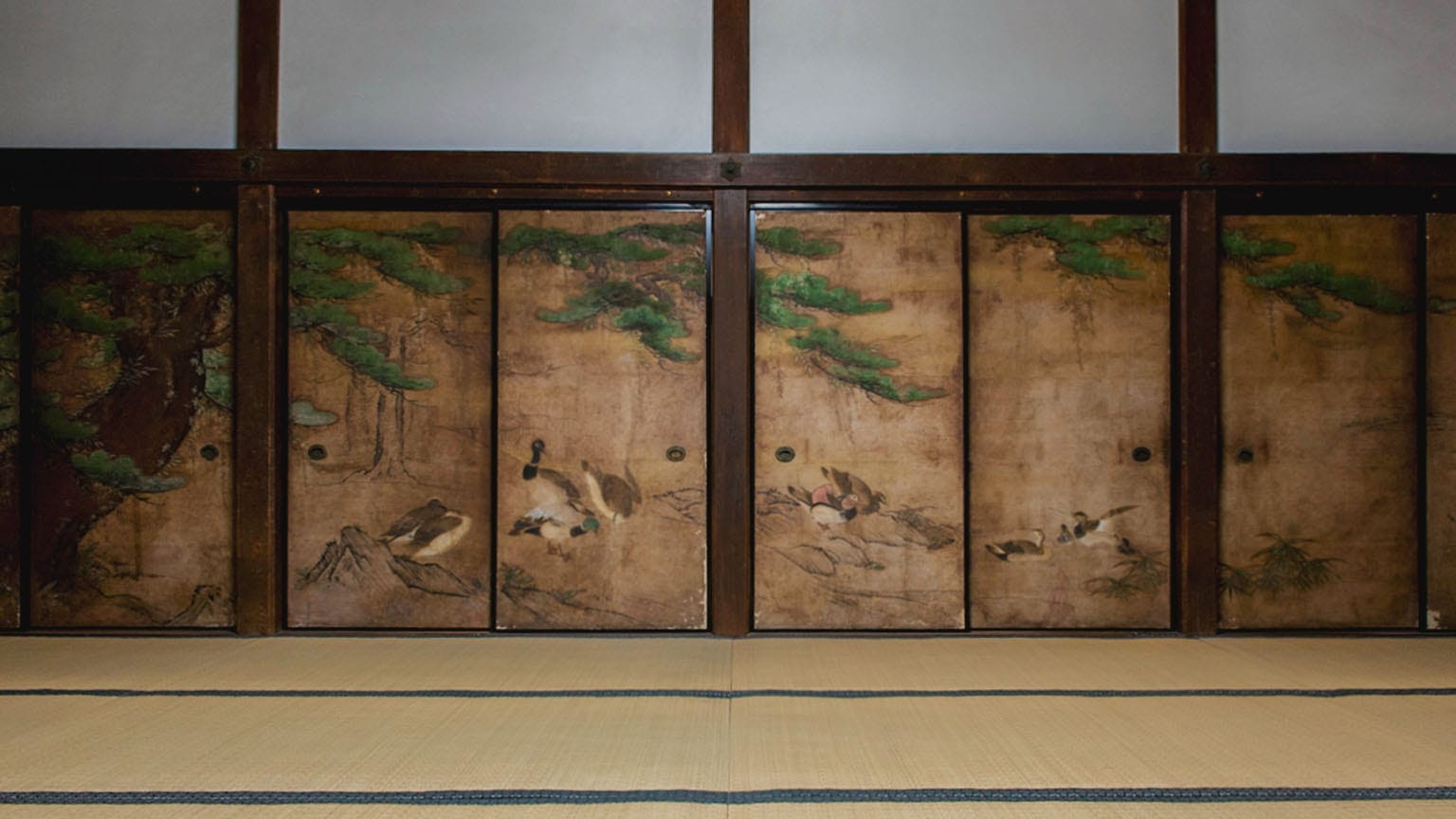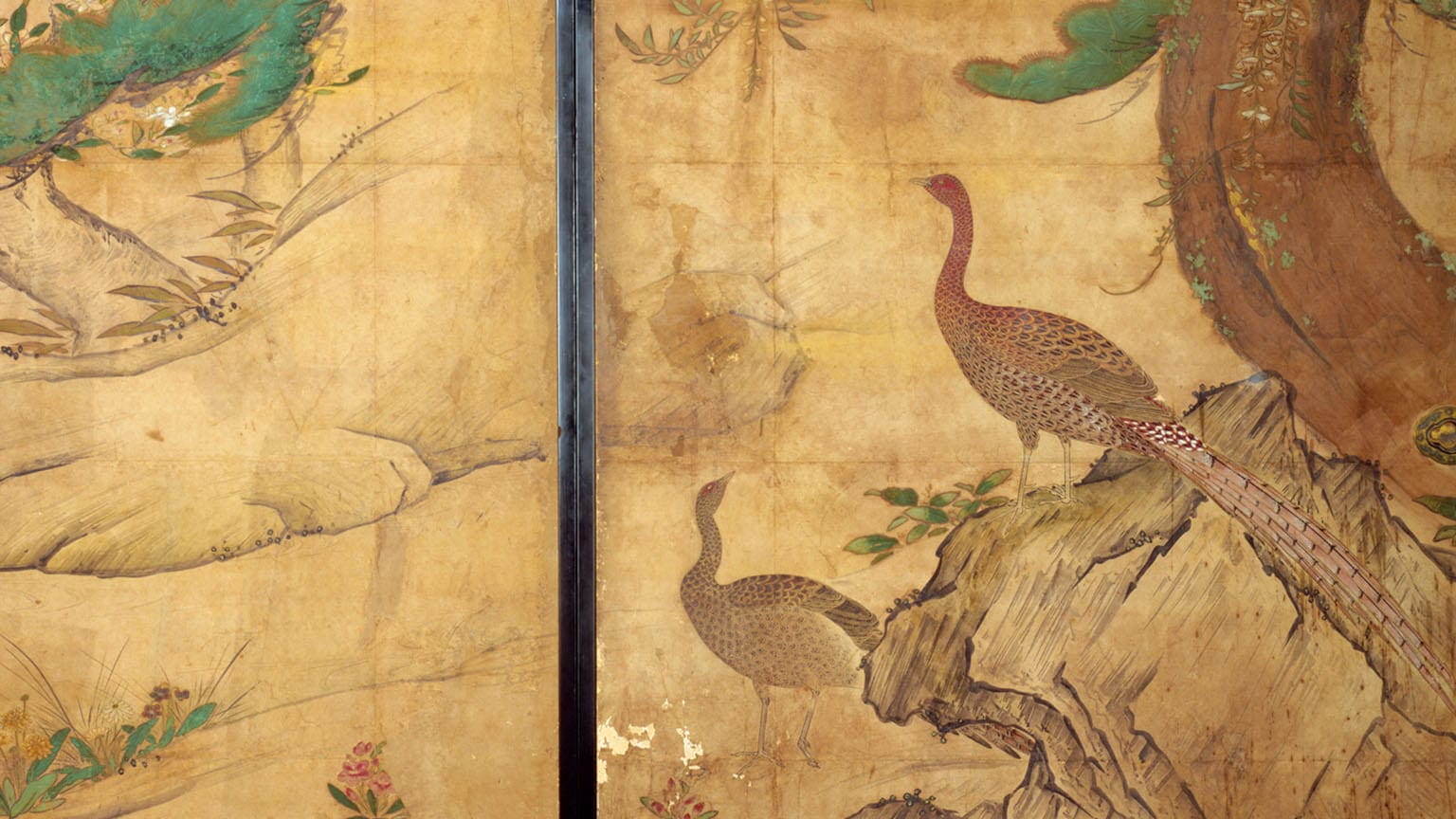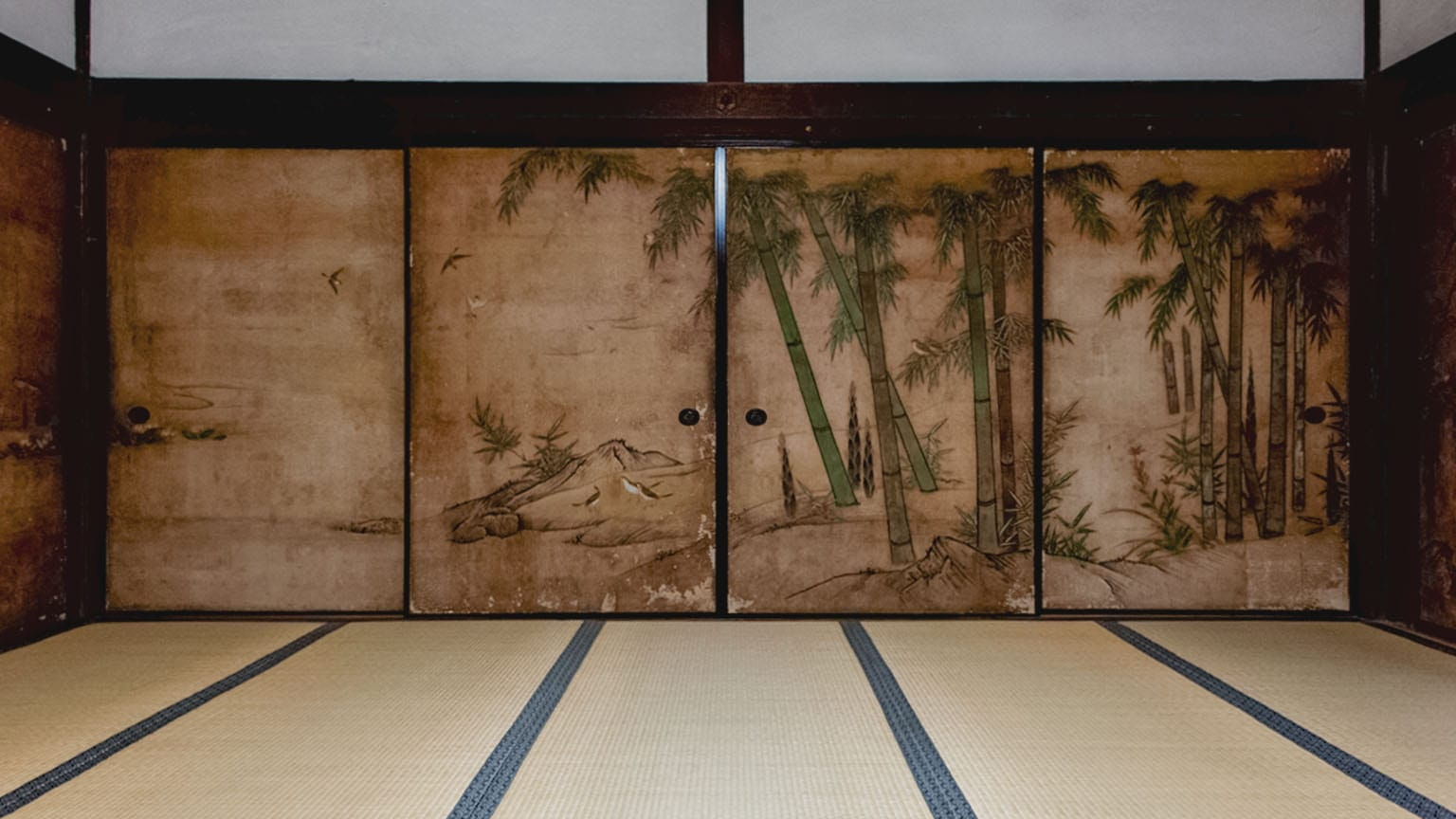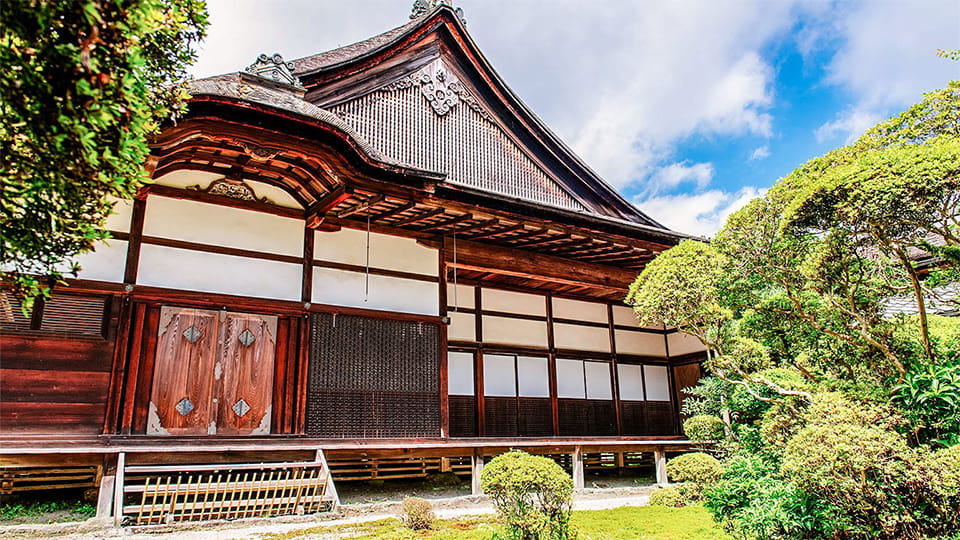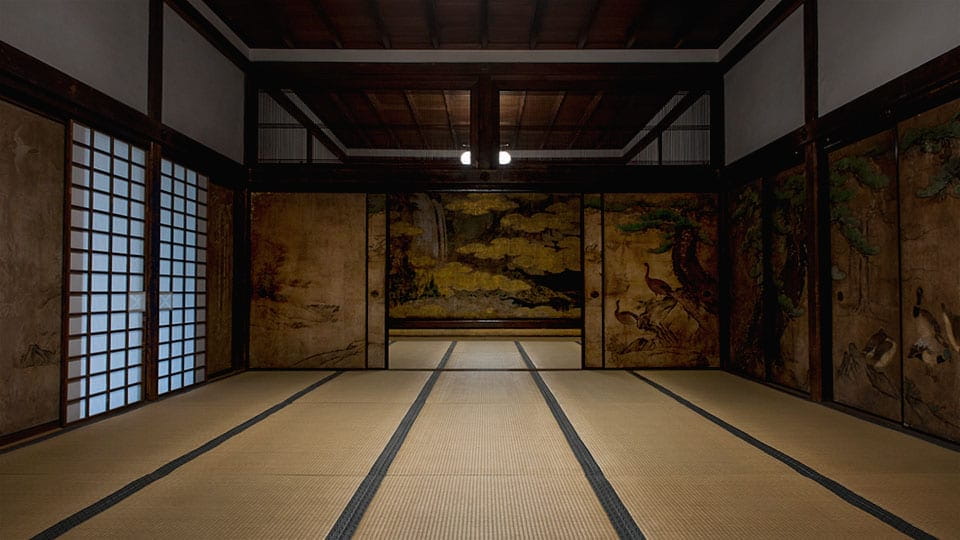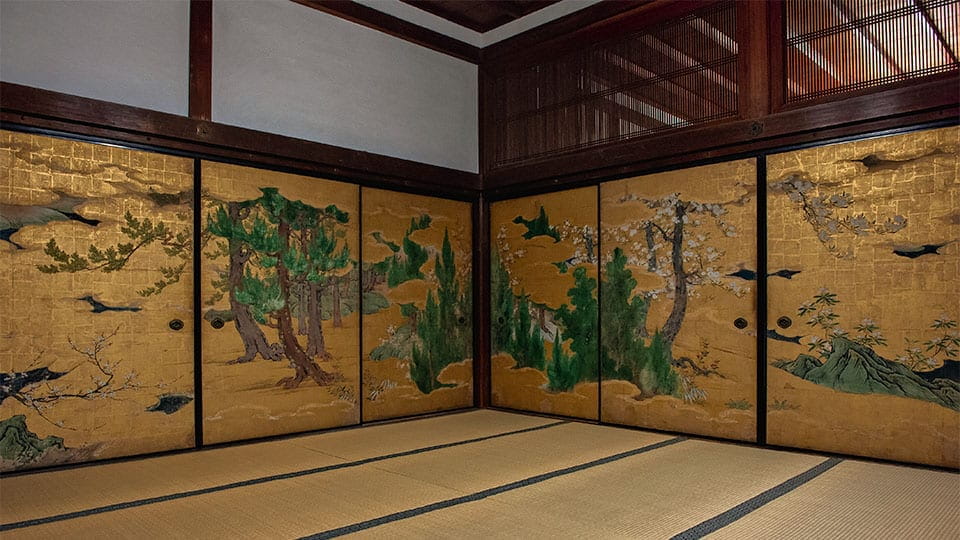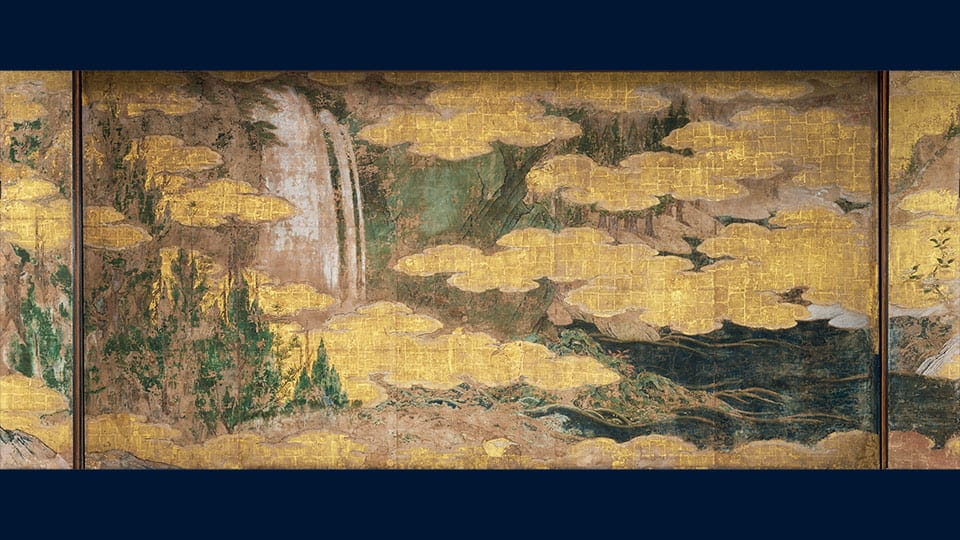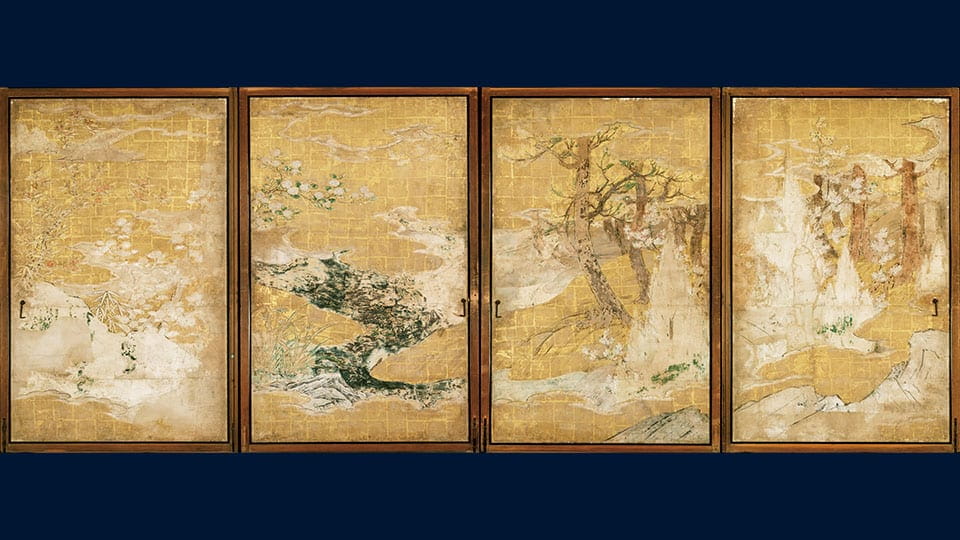Cultural Property of Japan
Kangakuin Kyakuden Wall Painting
READER
The Kangakuin Kyakuden (Guest Wing), designated as a National Treasure, features important wall paintings from the late 16th-century Momoyama Period in two south-side rooms. They were created by Kano Mitsunobu and well represent the artistic styles of this period. Mitsunobu was the eldest son of Kano Eitoku, who served as official painter of warlords Oda Nobunaga and Toyotomi Hideyoshi. He worked with his father on the wall paintings of the famed Azuchi Castle and continued painting for the ruling Toyotomi and Tokugawa clans after his father’s death.
The most prominent piece is the 15-paneled Flowers of the Four Seasons in the First Room, painted on a gold-leaf base. It is Mitsunobu’s most famous work and regarded as the paramount example of Momoyama Period wall painting.
The grand alcove features a winter scene with a waterfall in the midst of snow-covered mountains. To the right are paintings of plums and cherries, representing spring, and continues with rhododendrons on the water. On the south side, wooden sliding doors known as Mairado are decorated with drawings of hydrangeas, irises and red maples, portraying the seasonal change from summer to autumn. These serene and elegant wall paintings are emblematic of Mitsunobu’s artistry.
The Second Room features 24 colored panels of flower and bird paintings on a paper base. Pine trees are the focal point, extending from the northwest corner with branches stretching out to both right and left. Under the trees are wild birds, ducks and mandarin ducks, complemented by paintings of sparrows on bamboo, wagtails on rocks, and herons in water reeds. The paintings illustrate the natural scenery in a crisp and vibrant style.
Please rate this cultural heritage introduction page.
-
-
Satisfaction
-
-
Understanding
-
-
Recommendation
-
-
Attractiveness
-



